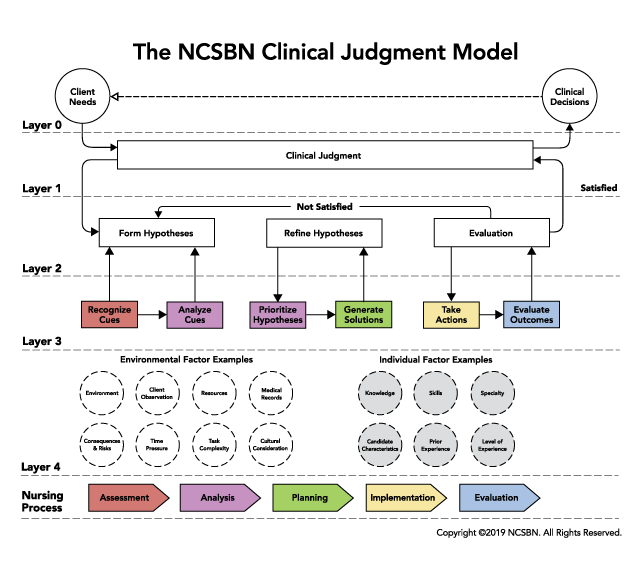
Below are some links to definitions and examples of Critical Thinking:
Below are some links to definitions and examples of Synthesizing Information:
What is Critical Thinking? Let us start with what it is NOT. It is NOT being negative, showing displeasure or disapproval or being emotionally judgmental. That is the social connotation of the word "critical". In the academic and clinical practice setting, the phrase "critical thinking" has a positive meaning.
Per Dictionary.com, critical thinking is defined as "disciplined thinking that is clear, rational, open-minded, and informed by evidence". (http://www.dictionary.com/browse/critical-thinking)
Per Rasmussen College, "Critical Thinking includes identifying a problem, determining the best solution and choosing the most effective method of reaching that solution. After executing the plan, critical thinkers reflect on the situation to figure out if the plan was effective and if it could have been done better." (http://www.rasmussen.edu/degrees/nursing/blog/understanding-why-nurses-need-critical-thinking-skills/) Critical thinking applies thinking, reading, writing, listening and speaking. There are many factors in critical thinking, including gathering, focusing, organizing, analyzing, generating, integrating, and evaluating information.
Critical thinking in research is the method of evaluating all the information gathered, including the sources from which the information is obtained by and determining the value of the information in relationship to the situation. It means evaluating the sources that you use to find the information to determine the value of the source. Information from an undergraduate's blog post is not going to have as much weight as information from an article in JAMA.
For nursing, it also means utilizing the Evidence-Based Practice methodology for determining the quality and strength of the information found. It means developing the skills to become a critical thinker beyond the classroom. This practice will allow you to develop deductive and sound reasoning skills and become self-confident in your thought process and your decision making skills.
What is synthesizing information? Synthesizing information is the process in which you connect multiple sources of information together and create a cohesive statement and/or argument. Per Dictionary.com, synthesize is: "to form (a material or abstract entity) by combining parts or elements" (http://www.dictionary.com/browse/synthesize) It is the method of pulling together information and finding the connection in that information (even if the information is in conflict) to say something new.
According to California State University: "Synthesis refers to the ability to put parts together to form a new whole. This may involve the production of a unique communication (theme or speech), a plan of operations (research proposal), or a set of abstract relations (scheme for classifying information).Synthesis refers to the ability to put parts together to form a new whole. This may involve the production of a unique communication (theme or speech), a plan of operations (research proposal), or a set of abstract relations (scheme for classifying information)."
http://www.csun.edu/science/ref/reasoning/questions_blooms/blooms.html
Analysis and Synthesis are closely related.
Although analysis and synthesis are closely related, there are differences between the styles. The publication "Analysis, Synthesis and and Response Papers" from Grand Valley State University offers an excellent overview of the styles with a specific focus on writing for nurses.
The clinical judgment model is a framework that guides nurses in their decision-making process. It helps to structure their thinking and enhance their ability to make accurate assessments and appropriate interventions. The model involves several stages, and by following this systematic approach, nurses can enhance their clinical judgement skills to provide efficient and effective care.
The model was developed by National Council of State Boards of Nursing (NCSBN) researchers.
The six steps of the Clinical Judgment Model are:
